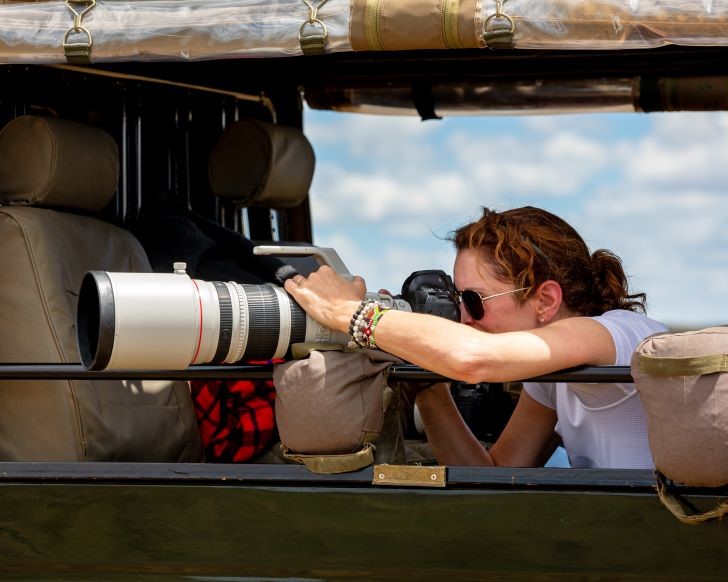Starting at Victoria (Vic) Falls in Zimbabwe at one of the 7 Natural Wonders of the World, taking you through the world-renowned Chobe National Park in Botswana, along the Zambezi River in Namibia, then to Etosha National Park with 114 different game species, and ending in Windhoek, the capital city.
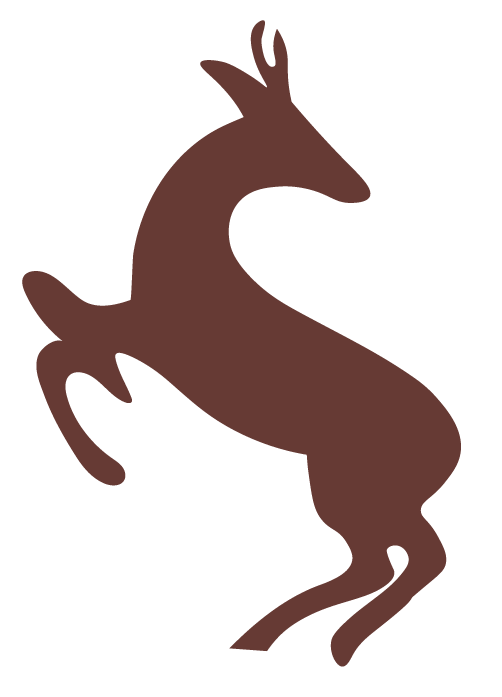
Starts:
2 Nights
2 Nights
1 Night
1 Night
1 Night
Ends:
Victoria Falls International Airport
Elephant Hills Hotel
Chobe River Camp
Hakusembe River Lodge
Camp Okaukuejo
Toshari Lodge
Hosea Kutako International Airport
–
Victoria Falls
Chobe National Park
Bwabwata National Park
Etosha National Park
Etosha National Park

Activities
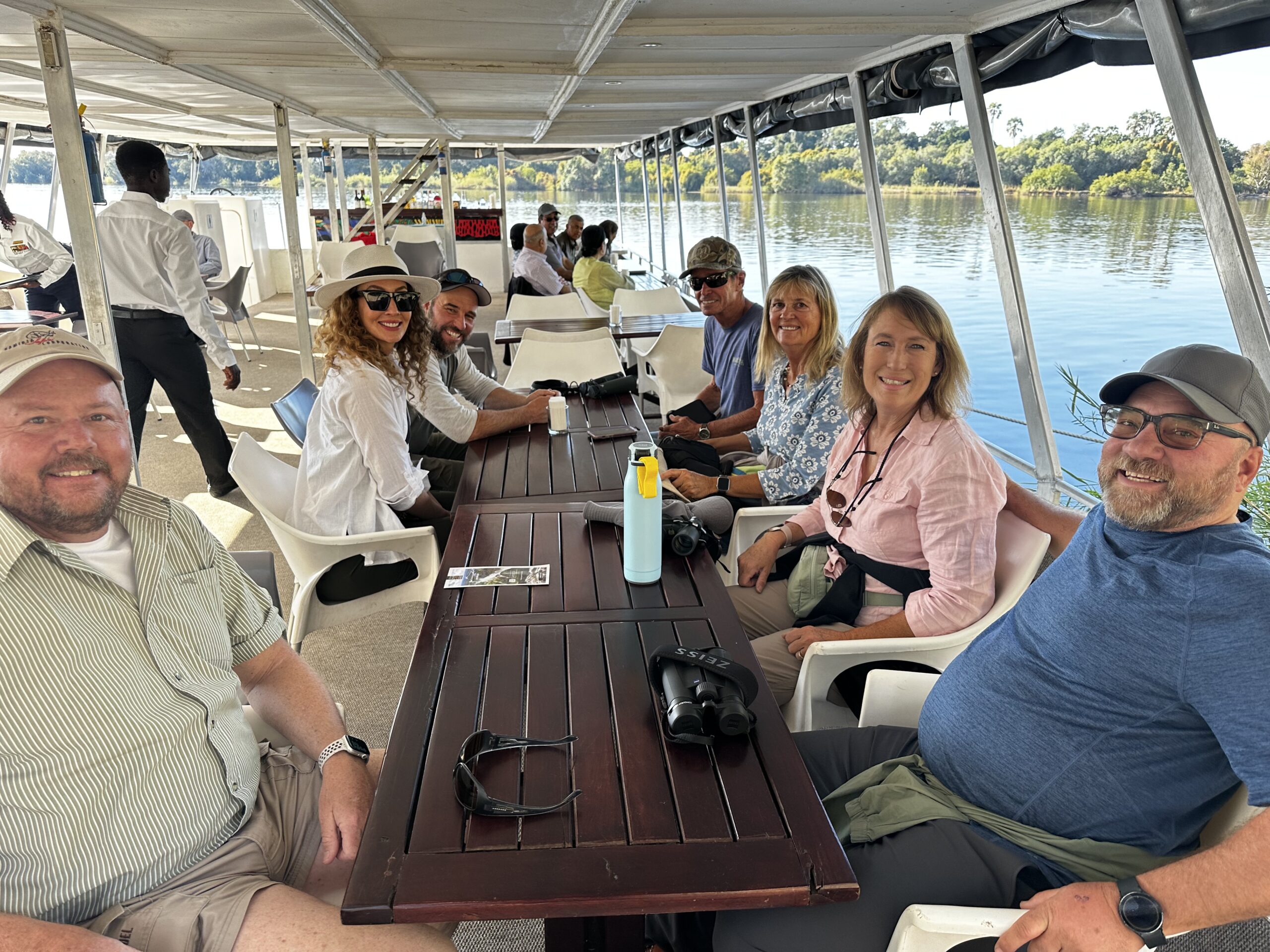

Useful Information
- Bottled H2O – Is advised in the bush.
- Vaccinations – You need no vaccinations when travelling to Namibia. Preventative malaria prophylaxis is recommended.
- Travel Requirements – A valid passport and sometimes VISA is required. Please contact the Namibian Embassy closest to you.
- Plug sockets – UK Plug (220v/50HZ).
- Currency – No need to try to obtain SA Rand or Namibian dollar in the USA, but rather exchange your US $ in Namibia or Botswana. The currency used at Vic Falls is US $. Keep a couple of $1 and $5 bills for tips.
Overview
Cross into Botswana to explore the renowned Chobe National Park, famous for its unmatched elephant populations and diverse wildlife. Then, venture along the serene Zambezi River in Namibia, where the landscape and wildlife create a truly magical setting.
The tour continues to Etosha National Park, Namibia’s premier wildlife destination, home to 114 different game species, including four of the Big Five. With its dramatic salt pan landscapes and abundant game, Etosha promises incredible safari experiences.
The journey concludes in Windhoek, Namibia’s vibrant capital city, where modern culture and history meet. This carefully curated itinerary offers the perfect mix of adventure, relaxation, and unforgettable memories in some of Africa’s most stunning locations.
Best Time to Visit
JAN
FEB
MAR
APR
MAY
JUN
JUL
AUG
SEP
OCT
NOV
DEC
Elephant Hills Hotel
Your unforgettable eight-day journey begins at Victoria Falls, one of the Seven Natural Wonders of the World. After your arrival at Victoria Falls Airport, your expert guide will greet you and accompany you to the luxurious Elephant Hills Hotel, located just minutes from the Falls.
After checking in and enjoying a brief orientation, the rest of the afternoon and evening are yours to explore or unwind. Choose from an array of optional activities to suit your taste for adventure or relaxation. Thrill-seekers can experience the rush of whitewater rafting, bungee jumping, or zip-lining, while those looking for a more serene experience might opt for a scenic helicopter flight over the breathtaking Falls.
For a tranquil end to the day, consider a sunset cruise along the Zambezi River. As you glide across the water, you’ll have the opportunity to spot wildlife such as elephants, hippos, and crocodiles, as well as a variety of bird species inhabiting the Victoria Falls National Park. A refreshing sundowner drink and the stunning African sunset provide the perfect conclusion to your first day.
Wildlife at Victoria Falls National Park
Giraffe
The giraffe, a towering icon of the African savannah, is known for its patterned coat and long neck, perfect for browsing treetop leaves. Found in grasslands and woodlands, its graceful stride and social behaviour make it a captivating symbol of the wild.
Leopard
The leopard, a stealthy predator of Africa’s bushveld and forests, is renowned for its rosette-patterned coat and unmatched climbing skills. Solitary by nature, it hunts with precision, stalking prey silently before a swift ambush.
Waterbuck
The waterbuck, a robust antelope of Africa’s grasslands and savannahs, is easily recognised by the distinctive white ring on its rump. Preferring habitats near water, it feeds on grasses and relies on its oily, water-resistant coat for protection.
Buffalo
The buffalo, a large and powerful herbivore of Africa’s savannas and woodlands, is renowned for its resilience and strong herd dynamics. Living in cohesive groups, buffalo graze on grasses and rely on their collective strength to deter predators.
Zebra
The plains zebra, common in Africa, is known for its striking stripe pattern, thought to aid in camouflage, insect deterrence, or predator confusion. Sociable by nature, zebras live in harems led by dominant stallions and often form larger herds with wildebeest.
Lion
The lion, a majestic and powerful predator of Africa’s grasslands and savannas, is celebrated for its strength and social structure. Living in prides, lions work together to hunt large prey, with their iconic roar echoing across the landscape as a symbol of dominance and unity.
Elephant
The elephant, the largest land mammal, roams Africa's deserts, savannahs and forests with grace and strength. Known for their intelligence and close family bonds, they use their versatile trunks for feeding, drinking, and communication.
Warthog
The warthog, a sturdy inhabitant of Africa's savannahs and grasslands, is easily recognised by its tusks and bristly mane. Feeding on grasses, roots, and berries, it often kneels to graze. Despite its rugged appearance, the warthog’s swift bursts of speed and playful behaviour make it a fascinating sight in the wild.
White Rhino
The white rhino, a massive and gentle herbivore, grazes Africa's grasslands and wetlands. Recognised for its broad mouth, perfect for feeding on grasses, it is often seen in small groups, with mothers closely guarding their young.
Kudu
The kudu, a graceful antelope of Africa's woodlands and savannahs, is known for its striking spiral horns and large, expressive ears. Shy and elusive, it feeds on leaves and shrubs, often blending seamlessly into its surroundings.
Eland
The common eland, a large antelope found in Namibia, is tan-colored with straight horns and a distinctive square profile. Males, much larger than females, can weigh as much as buffalo. Herds roam open country, grazing during the rainy season and browsing in winter. They can leap impressive heights and give birth to a single calf after a nine-month gestation.
Sable Antelope
The sable, a majestic antelope of Africa's woodlands and grasslands, is distinguished by its glossy black coat and impressive curved horns. Highly territorial, sables live in herds led by dominant males.
Accommodation at Elephant Hills Hotel
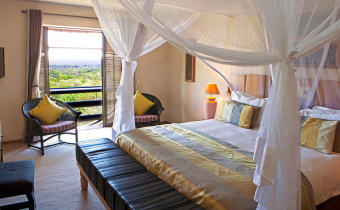


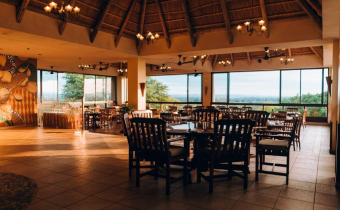
Included
- Transfer from airport to hotel
- Park fees and entrance at Victoria falls
- Dinner and Drum show at The Boma, African restaurant
- Sundown cruise( Standard cruise without dinner)
Excluded
- High Tea at Victoria Falls hotel, recommended!
- Optional activities

Elephant Hills Hotel
After a delicious breakfast, it’s time to see for yourself why Victoria Falls is one of the Seven Natural Wonders of the World. Take a guided walk around the Falls and soak in the sheer power and beauty of this incredible natural wonder. The locals call it “Mosi-oa-Tunya,” or “The Smoke that Thunders,” and it’s easy to see why as the roaring water crashes down into the gorge, sending up a fine mist that dances in the sunlight. It’s a sight that will stay with you forever.
The rest of the day is yours to enjoy however you like. Explore the vibrant African markets packed with beautiful handmade curios – perfect for a unique souvenir or two. If you fancy something different, take a stroll along the main street of Victoria Falls and pop into the charming European-style boutiques. There’s something for everyone here.
For the adventure lovers, why not keep the excitement going with more optional activities? Whether it’s another adrenaline-filled experience or something more relaxing, there are plenty of ways to make the most of your time.
As the day draws to a close, get ready for a real treat. Dinner at ‘The Boma’ is more than just a meal – it’s an unforgettable experience. With traditional African dishes, drumming, dancing, and storytelling, it’s the perfect way to end your second day.
Dinner at the Boma Restaurant

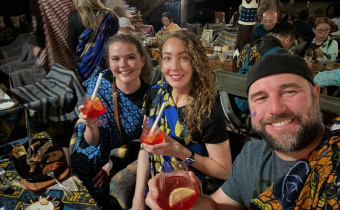

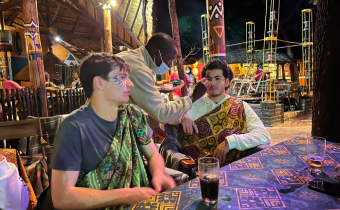
Included
- Transfer from airport to hotel
- Park fees and entrance at Victoria falls
- Dinner and Drum show at The Boma, African restaurant
- Sundown cruise( Standard cruise without dinner)
Excluded
- High Tea at Victoria Falls hotel, recommended!
- Optional activities

Chobe River Camp
After breakfast, bid farewell to Zimbabwe as your adventure continues with a scenic drive through Botswana to Namibia. The journey takes you past towering baobab trees that stand as ancient sentinels along the road, adding to the charm of the landscape.
Arrive at Chobe River Camp in time for the highlight of the day – an unforgettable afternoon cruise along the Chobe River. This is the best way to witness the incredible wildlife that calls the Chobe National Park home. Marvel at the world’s largest concentration of elephants as they gather near the water’s edge, and keep an eye out for various antelope species grazing nearby. Bird enthusiasts will be thrilled by the sight of some of the 500 bird species that inhabit the area, from majestic fish eagles to colourful kingfishers.
As the sun sets over the river, you’ll make your way to Chobe River Camp for the night. Your accommodation is a unique delta-style tent perched on stilts, blending seamlessly with the natural surroundings. Drift off to the soothing sounds of the wilderness, ready for another day of adventure tomorrow.
Wildlife in Chobe National Park
Giraffe
The giraffe, a towering icon of the African savannah, is known for its patterned coat and long neck, perfect for browsing treetop leaves. Found in grasslands and woodlands, its graceful stride and social behaviour make it a captivating symbol of the wild.
Leopard
The leopard, a stealthy predator of Africa’s bushveld and forests, is renowned for its rosette-patterned coat and unmatched climbing skills. Solitary by nature, it hunts with precision, stalking prey silently before a swift ambush.
Oryx
The oryx, a striking antelope of Namibia’s arid regions, is renowned for its long, spear-like horns and bold facial markings. Perfectly adapted to desert life, it can survive extreme heat and limited water.
Brown Hyena
The brown hyena, a resourceful predator of the Kalahari and Namib deserts, scavenges carcasses, hunts small prey, and feeds on desert melons or seal pups along Namibia’s coast. Smaller than the spotted hyena, it’s recognised by its pointed ears and shaggy brown coat, which it raises to intimidate rivals.
Cheetah
The cheetah, a swift predator of Namibia’s savannas, is built for speed, reaching over 100 km/h to hunt antelope like springbok and impala. Slim and longlegged, it stands out with round spots and black tear lines under its eyes.
Spotted Hyena
Spotted hyenas in Namibia are skilled hunters, often taking down large prey like zebras. Their powerful jaws can crush bones with ease, giving them one of the strongest bite forces of any mammal. This ability helps them extract nutrients and clean up the ecosystem by efficiently disposing of carcasses.
Jackal
The jackal, a cunning and adaptable predator, inhabits Namibia's savannahs and deserts. Known for its pointed ears and bushy tail, it thrives as both a scavenger and a skilled hunter of small prey.
Wildebeest
The blue wildebeest, a common sight on Namibia’s grasslands, is a large antelope with a front-heavy build, dark grey coat, and curved horns. Grazing alongside zebras, it thrives on short grass. During the rainy season, females calve simultaneously, overwhelming predators like lions and hyenas
Zebra
The plains zebra, common in Namibia, is known for its striking stripe pattern, thought to aid in camouflage, insect deterrence, or predator confusion. Sociable by nature, zebras live in harems led by dominant stallions and often form larger herds with wildebeest.
Lion
The lion, a majestic and powerful predator of Africa’s grasslands and savannas, is celebrated for its strength and social structure. Living in prides, lions work together to hunt large prey, with their iconic roar echoing across the landscape as a symbol of dominance and unity.
Elephant
The elephant, the largest land mammal, roams Namibia's deserts, savannahs and forests with grace and strength. Known for their intelligence and close family bonds, they use their versatile trunks for feeding, drinking, and communication.
Warthog
The warthog, a sturdy inhabitant of Namibia’s savannahs and grasslands, is easily recognised by its tusks and bristly mane. Feeding on grasses, roots, and berries, it often kneels to graze. Despite its rugged appearance, the warthog’s swift bursts of speed and playful behaviour make it a fascinating sight in the wild.
Honey Badger
The honey badger, known for its fearlessness and tough nature, roams Nambia's savannahs and forests. Despite its small size, it is a formidable predator and scavenger, unafraid to take on much larger animals.
Kudu
The kudu, a graceful antelope of Namibia’s woodlands and savannahs, is known for its striking spiral horns and large, expressive ears. Shy and elusive, it feeds on leaves and shrubs, often blending seamlessly into its surroundings.
Eland
The common eland, a large antelope found in Namibia, is tan-colored with straight horns and a distinctive square profile. Males, much larger than females, can weigh as much as buffalo. Herds roam open country, grazing during the rainy season and browsing in winter. They can leap impressive heights and give birth to a single calf after a nine-month gestation.
Springbok
Springboks in Namibia are known for their unique “pronking” behaviour, where they leap up to three metres into the air, possibly to evade predators or display strength. Adapted to the arid environment, they can go long periods without drinking water, relying on moisture from the plants they eat to survive.
Wild Dog
The African wild dog, a highly social and endangered predator, roams savannahs and bushveld in tight-knit packs. They are very social and live in packs of up to 40. They are known for their strong collaborative relationships, sharing food, and helping each other out. African wild dogs can travel up to 50 kilometers per day and occupy territories of up to 1,500 square kilometers.
Accommodation at Chobe River Camp
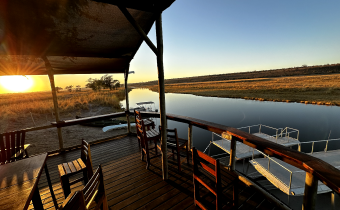

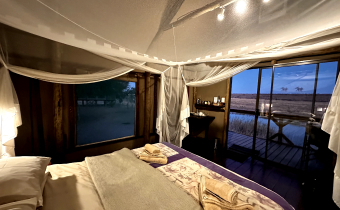
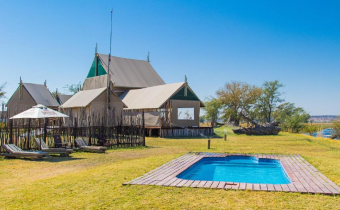
Included
- Sun downer river cruise
Excluded
- Lunch at Chobe River Camp

Chobe River Camp
Wake up to the tranquil sounds of nature and enjoy a leisurely breakfast at Chobe River Camp. Today is yours to spend as you wish, whether you prefer to relax or explore the area further.
For those seeking a laid-back day, unwind at the camp and take in the stunning views of the surrounding wilderness. The peaceful atmosphere and connection to nature make it an ideal spot to recharge.
If you’re eager for more adventure, choose from two exciting options. Join a full-day boat trip along the Chobe River, where you can enjoy up-close encounters with the abundant wildlife that thrives along the water’s edge. Alternatively, embark on a game drive into Chobe National Park aboard a safari vehicle. This allows you to experience the park from a different perspective, spotting elephants, giraffes, predators, and a wide variety of birds in their natural habitat.
As night falls, return to Chobe River Camp for your second evening in this serene location. The camp’s unique setting offers a thrilling chance to hear the sounds of the wild—perhaps the deep rumble of elephants, the calls of hippos, the haunting laughter of hyenas, or even the distant roar of a lion.
Accommodation at Chobe River Camp




Included
- 3 hour Chobe National Park Game Drive or 3 hour River Cruise or Full Day Birding Cruise
Excluded
- Lunch at Chobe River Camp

Hakusembe River Lodge
After breakfast at Chobe River Camp, the journey continues as you head towards the remarkable Bwabwata National Park. This vast and diverse wilderness, often referred to as the “People’s Park,” is a haven for both wildlife and the local communities that coexist harmoniously with nature.
As you travel through the park, keep your eyes peeled for some of its most iconic residents. There’s a good chance of spotting Cape buffalo, elephants, and the striking roan antelope. You might also catch a glimpse of the tsessebe, oribi, and other graceful antelope species that roam these plains. Bwabwata’s rich biodiversity and scenic beauty make it a true gem for wildlife enthusiasts.
In the late afternoon, arrive at Hakusembe River Lodge, your home for the night. Nestled along the banks of the Okavango River, this charming lodge offers a peaceful retreat surrounded by lush greenery. Spend the evening relaxing by the water, listening to the gentle sounds of the river, and enjoying the tranquillity of your surroundings.
Wildlife at Bwabwata National Park
Giraffe
The giraffe, a towering icon of the African savannah, is known for its patterned coat and long neck, perfect for browsing treetop leaves. Found in grasslands and woodlands, its graceful stride and social behaviour make it a captivating symbol of the wild.
Leopard
The leopard, a stealthy predator of Africa’s bushveld and forests, is renowned for its rosette-patterned coat and unmatched climbing skills. Solitary by nature, it hunts with precision, stalking prey silently before a swift ambush.
Cheetah
The cheetah, a swift predator of Namibia’s savannas, is built for speed, reaching over 100 km/h to hunt antelope like springbok and impala. Slim and longlegged, it stands out with round spots and black tear lines under its eyes.
Spotted Hyena
Spotted hyenas in Namibia are skilled hunters, often taking down large prey like zebras. Their powerful jaws can crush bones with ease, giving them one of the strongest bite forces of any mammal. This ability helps them extract nutrients and clean up the ecosystem by efficiently disposing of carcasses.
Wildebeest
The blue wildebeest, a common sight on Namibia’s grasslands, is a large antelope with a front-heavy build, dark grey coat, and curved horns. Grazing alongside zebras, it thrives on short grass. During the rainy season, females calve simultaneously, overwhelming predators like lions and hyenas
Zebra
The plains zebra, common in Namibia, is known for its striking stripe pattern, thought to aid in camouflage, insect deterrence, or predator confusion. Sociable by nature, zebras live in harems led by dominant stallions and often form larger herds with wildebeest.
Elephant
The elephant, the largest land mammal, roams Namibia's deserts, savannahs and forests with grace and strength. Known for their intelligence and close family bonds, they use their versatile trunks for feeding, drinking, and communication.
Buffalo
The buffalo, a large and powerful herbivore of Africa’s savannas and woodlands, is renowned for its resilience and strong herd dynamics. Living in cohesive groups, buffalo graze on grasses and rely on their collective strength to deter predators.
Lion
The lion, known as the “King of the Jungle,” roams Namibia’s grasslands and savannahs in prides. With its impressive mane and powerful roar, the lion is a symbol of strength and leadership. Predatory by nature, it hunts in coordinated groups, making it one of Africa’s most iconic and revered predators.
Hippo
The hippopotamus, a massive and semi-aquatic mammal of Africa’s rivers and lakes, is known for its immense size and territorial nature. Spending much of their day submerged in water, hippos emerge at night to graze on grasses, showcasing their surprising agility on land.
Wild Dog
The African wild dog, a highly social and endangered predator, roams savannahs and bushveld in tight-knit packs. They are very social and live in packs of up to 40. They are known for their strong collaborative relationships, sharing food, and helping each other out. African wild dogs can travel up to 50 kilometers per day and occupy territories of up to 1,500 square kilometers.
Accommodation at Hakusembe River Lodge


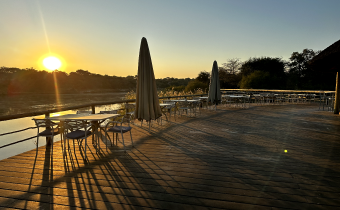

Included
- Picnic Lunch

Toshari Lodge
After a delicious breakfast, the adventure continues with a scenic drive to Etosha National Park, one of Namibia’s most famous wildlife destinations. Known for its impressive diversity of animals, Etosha is home to four of the Big Five: elephant, rhino, leopard, and lion. The park is also a haven for more than 114 different game species, including giraffes, zebras, and antelope, while avid birdwatchers can delight in over 340 bird species that make Etosha their home.
The journey takes you through some of the country’s most picturesque commercial farming areas, with a stop at the charming town of Outjo. This quaint town offers a perfect opportunity to stretch your legs, pick up a snack, or browse local shops before heading towards Etosha.
By mid-afternoon, you’ll arrive at Anderson’s Gate, the southern entrance to the park, and begin the final stretch to Toshari Lodge. Along the way, keep your eyes peeled—there’s a good chance of spotting elephants even before you reach the camp! After checking in and relaxing, enjoy a delicious buffet dinner in the lodge’s restaurant, where you can experience the singing and dancing of the local staff, offering a glimpse of the vibrant Namibian culture.
Please Note: Guests also have the option to stay at Toshari Lodge or Camp Okaukuejo for this night. Please enquire with us at the time of booking to discuss the which lodge would better suit your group.
Wildlife at Etosha National Park
Giraffe
The giraffe, a towering icon of the African savannah, is known for its patterned coat and long neck, perfect for browsing treetop leaves. Found in grasslands and woodlands, its graceful stride and social behaviour make it a captivating symbol of the wild.
Leopard
The leopard, a stealthy predator of Africa’s bushveld and forests, is renowned for its rosette-patterned coat and unmatched climbing skills. Solitary by nature, it hunts with precision, stalking prey silently before a swift ambush.
Meerkat
The meerkat, a small and social mammal of the Kalahari and Namib deserts, is known for its upright stance and watchful nature. Living in close-knit colonies, meerkats forage for insects and roots while sentinels stand guard.
Brown Hyena
The brown hyena, a resourceful predator of the Kalahari and Namib deserts, scavenges carcasses, hunts small prey, and feeds on desert melons or seal pups along Namibia’s coast. Smaller than the spotted hyena, it’s recognised by its pointed ears and shaggy brown coat, which it raises to intimidate rivals.
Cheetah
The cheetah, a swift predator of Namibia’s savannas, is built for speed, reaching over 100 km/h to hunt antelope like springbok and impala. Slim and longlegged, it stands out with round spots and black tear lines under its eyes.
Spotted Hyena
Spotted hyenas in Namibia are skilled hunters, often taking down large prey like zebras. Their powerful jaws can crush bones with ease, giving them one of the strongest bite forces of any mammal. This ability helps them extract nutrients and clean up the ecosystem by efficiently disposing of carcasses.
Pangolin
Pangolins in Namibia are secretive, nocturnal creatures covered in tough, overlapping scales made of keratin—the same material as human nails. When threatened, they curl into a tight ball, using their armour-like scales as protection against predators.
Wildebeest
The blue wildebeest, a common sight on Namibia’s grasslands, is a large antelope with a front-heavy build, dark grey coat, and curved horns. Grazing alongside zebras, it thrives on short grass. During the rainy season, females calve simultaneously, overwhelming predators like lions and hyenas
Zebra
The plains zebra, common in Namibia, is known for its striking stripe pattern, thought to aid in camouflage, insect deterrence, or predator confusion. Sociable by nature, zebras live in harems led by dominant stallions and often form larger herds with wildebeest.
Oryx
The oryx, a striking antelope of arid regions like the Kalahari, is recognised by its long, straight horns and bold black-and-white facial markings. Adapted to desert life, it can survive on sparse vegetation and minimal water.
Aardvark
The aardvark, a nocturnal forager of Namibia’s open landscapes, is known for its pig-like body, kangaroo tail, long ears, and anteater snout. It uses strong claws to break into termite mounds, licking up insects with its sticky tongue. A solitary burrow-dweller, females give birth to a single cub underground.
Baboon
Baboons, highly social primates found in savannahs and mountains, are known for their intelligence and adaptability. Living in large troops, they forage for fruits, seeds, and small prey.
Elephant
The elephant, the largest land mammal, roams Namibia's deserts, savannahs and forests with grace and strength. Known for their intelligence and close family bonds, they use their versatile trunks for feeding, drinking, and communication.
Warthog
The warthog, a sturdy inhabitant of Namibia’s savannahs and grasslands, is easily recognised by its tusks and bristly mane. Feeding on grasses, roots, and berries, it often kneels to graze. Despite its rugged appearance, the warthog’s swift bursts of speed and playful behaviour make it a fascinating sight in the wild.
Roan Antelope
The roan antelope, found in Namibia’s woodland savannahs, is a horse-like herbivore with a fawn coat, stiff mane, and a black-and-white face. A bull leads a group of 5-15 females and defends them from rivals and predators like lions using powerful horn strikes. Females hide their calves for the first month of life.
Black Rhino
Black rhinos in Namibia are critically endangered but are known for their solitary nature and territorial behavior, often marking their territory with dung piles. Unlike their white cousins, black rhinos have a more pointed, hooked-shaped mouth, which is perfectly suited for browsing on bushes and shrubs, their primary food source.
White Rhino
The white rhino, a massive and gentle herbivore, grazes Namibia’s grasslands and wetlands. Recognised for its broad mouth, perfect for feeding on grasses, it is often seen in small groups, with mothers closely guarding their young.
Lion
The lion, known as the “King of the Jungle,” roams Namibia’s grasslands and savannahs in prides. With its impressive mane and powerful roar, the lion is a symbol of strength and leadership. Predatory by nature, it hunts in coordinated groups, making it one of Africa’s most iconic and revered predators.
Kudu
The kudu, a graceful antelope of Namibia’s woodlands and savannahs, is known for its striking spiral horns and large, expressive ears. Shy and elusive, it feeds on leaves and shrubs, often blending seamlessly into its surroundings.
Eland
The common eland, a large antelope found in Namibia, is tan-colored with straight horns and a distinctive square profile. Males, much larger than females, can weigh as much as buffalo. Herds roam open country, grazing during the rainy season and browsing in winter. They can leap impressive heights and give birth to a single calf after a nine-month gestation.
Sable Antelope
The sable, a majestic antelope of Namibia’s woodlands and grasslands, is distinguished by its glossy black coat and impressive curved horns. Highly territorial, sables live in herds led by dominant males.
Honey Badger
The honey badger, known for its fearlessness and tough nature, roams Nambia's savannahs and forests. Despite its small size, it is a formidable predator and scavenger, unafraid to take on much larger animals.
Wild Dog
The African wild dog, a highly social and endangered predator, roams savannahs and bushveld in tight-knit packs. They are very social and live in packs of up to 40. They are known for their strong collaborative relationships, sharing food, and helping each other out. African wild dogs can travel up to 50 kilometers per day and occupy territories of up to 1,500 square kilometers.
Accommodation at Toshari Lodge
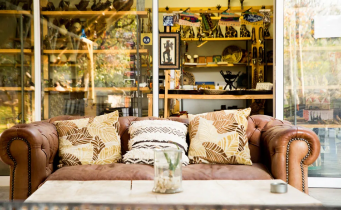

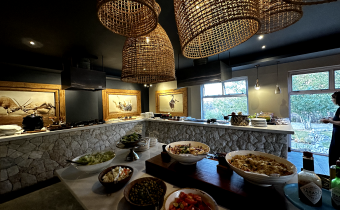
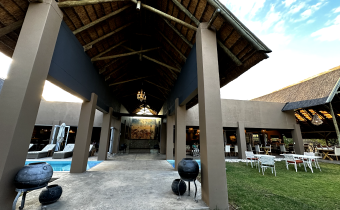
Included
- Full day game drive in our own vehicle, if roads are in a good condition, if not, we may opt to use a 3rd party tour operator, who will do it their own vehicle.
- Picnic lunch or lunch pack

Toshari Lodge
A full day’s game drive, leaving early to enjoy the cool morning air, we drive through Etosha in the direction of Halali and Namutoni, enjoying the view of the massive Etosha Pan. We will visit several waterholes, where the abundance of wildlife is focused, with a chance to view up to 114 different game species, and for the avid birder, more than 340 bird species.
Return to Toshari Lodge just outside the gate before sunset.
Accommodation at Toshari Lodge




Included
- Full day game drive in our own vehicle, if roads are in a good condition, if not, we may opt to use a 3rd party tour operator, who will do it their own vehicle.
- Picnic lunch or lunch pack

End of Tour
After a late relaxed breakfast, at this beautifully lodge, you would love to stay, but we will be on our way to Windhoek. On the way, we may stop at the famous wood carvers’ market at Okahandja or at the craft market in the main street in town to pick up a few last souvenirs. You will be dropped off at your accommodation of choice or transferred to the airport for your outbound flight.
Included
- Half day game drive if no guests are flying out on day 8
Excluded
- Lunch

Important Information
- Rates are per person and exclude the international flight from/to your home country.
- This tour is not available for solo travelers.
- The tour can accommodate a maximum of 7 people.
- The minimum number of people required for this tour is 4.
- This tour is offered in US dollars (USD).

Rates per Person
African Adventures Tour
8 Day Tour
US$ 2940
Important Information
- All add-ons are subject to availability and must be booked in advance.
- Prices are available upon request and may vary based on seasonality and lodge selection.
- Transfers to and from locations are included unless stated otherwise.
- Optional activities such as game drives, hot air balloon flights, and wellness treatments can be arranged at an additional cost.
- Customisations are available to suit your preferences—contact us to tailor your experience.


Big Cat Tracking
Embark on an unforgettable two-night stay at Okonjima Plains Camp, home to the renowned AfriCat Foundation. Experience the thrill of tracking wild cheetahs or leopards in their natural habitat during a morning or afternoon excursion, followed by an exhilarating game drive. This package includes round-trip airport transfers, two nights’ accommodation, breakfast and dinner, as well as guided tracking and a game drive.
Wellness Retreat
Ease into your African adventure or unwind before heading home with a rejuvenating stay at GocheGanas Nature Reserve & Wellness Village. This one- or two-night experience is designed to help you relax and recharge, featuring indoor and outdoor massages, hydrotherapy, and access to a heated indoor granite pool. Enjoy breathtaking views from the outdoor pool overlooking a waterhole. This package includes accommodation, breakfast and dinner, a full-body massage, and access to all wellness facilities. A game drive is available as an optional extra.

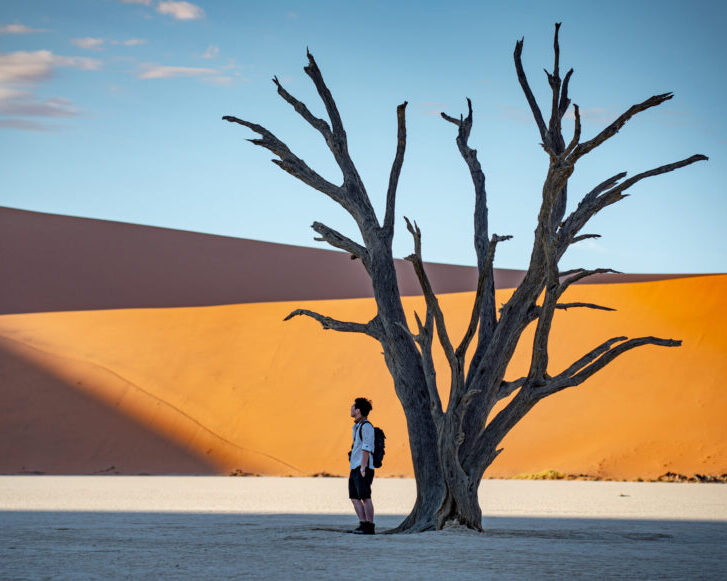
Luxury Escape to Sossusvlei
Indulge in a two-night luxury stay in Sossusvlei, surrounded by the breathtaking dunes of the Namib Desert. Your package includes round-trip transfers from Windhoek, accommodation in a four- or five-star lodge, all meals, and a guided excursion to explore the iconic Sossusvlei dunes. For an unforgettable experience, opt for a sunrise hot air balloon ride over the desert, offering spectacular aerial views of this ancient landscape.
Okapuka Lodge
Extend your adventure with a final night at Okapuka Safari Lodge, a classic retreat set amidst Namibia’s stunning wilderness. Enjoy a leisurely game drive before your departure, taking in the last glimpses of Africa’s incredible wildlife. This package includes dinner, breakfast, a game drive, and seamless airport transfers for a smooth return journey.
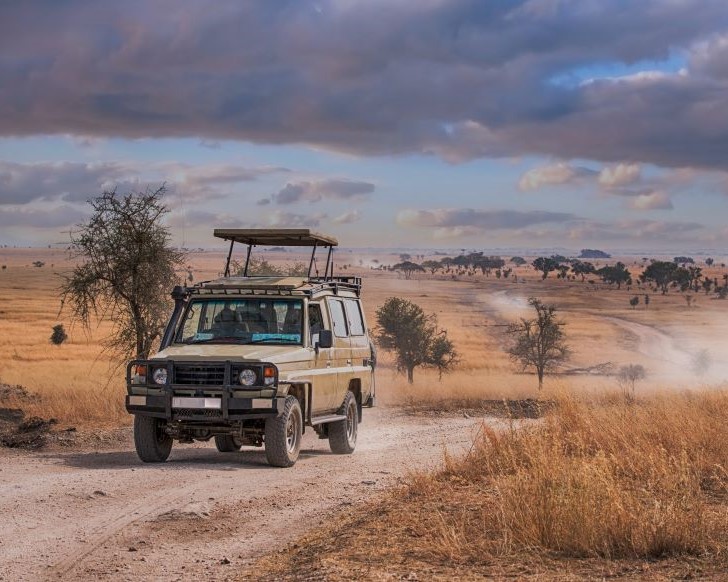
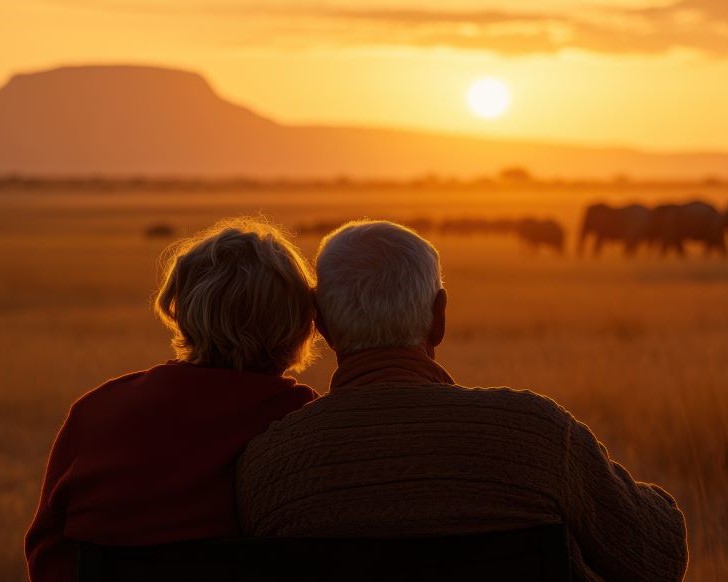
Special Event Celebration
Make your African adventure truly unforgettable by celebrating a special occasion in the most extraordinary way. Whether it’s an anniversary, birthday, proposal, or even a destination wedding, we’ll create a tailor-made experience to match your vision. Not sure how to plan it? Let us surprise you! From romantic getaways to intimate celebrations, we ensure every moment is filled with magic.
Wildlife Photography
For passionate photographers, we offer the ultimate tailored experience to capture Africa’s most breathtaking landscapes and wildlife. Whether you dream of shooting the haunting ruins of Kolmanskop, the towering dunes of Sossusvlei, or the rugged Skeleton Coast, we will take care of all the logistics so you can focus on getting that perfect shot. Whether you’re an amateur or a seasoned professional, we’ll design the perfect photography adventure for you.
